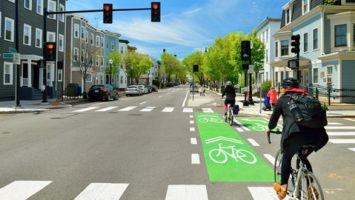
The City of Cincinnati, Ohio has decided against using 3D crosswalks as a strategy to increase pedestrian safety after receiving information from the Federal Highway Administration (FHWA).
Initially proposed by City Councilman Jeff Pastor, the city’s Department of Transportation and Engineering (DOTE) investigated the cost and feasibility of 3D crosswalks – which is a method of painting the crosswalks that creates an optical illusion of a speed hump. In addition, they looked at the possibility of piloting these crosswalks at selected areas around the city, specifically around schools.
As a result of demonstrated safety concerns, the FHWA is no longer considering field experimentation with 3D crosswalk designs. Previously approved field experimentation had demonstrated that a significant percentage of drivers swerved upon seeing the markings, perhaps perceiving them to be real raised objects on the roadway. While this type of driver reaction did decrease over time, the experiment showed that at least more than one in ten drivers might make an evasive or erratic maneuver upon experiencing this or similar installations for the first time.
“If the design is effective at portraying a 3-dimensional object and drivers believe there are real raised objects on the roadway, it is a reasonable expectation that drivers will take evasive action, such as braking abruptly, in fear of colliding with the perceived obstruction,” the FWHA FAQ page states. “This type of driver reaction is, in fact, what the experiment showed. The potential for a significant percentage of drivers to react unpredictably is too great a risk to allow further field experimentation.”
The FHWA also stated that 3D crosswalks are not compliant with the Manual on Uniform Traffic Control Devices (MUTCD), which sets standards for road markings and equipment.


